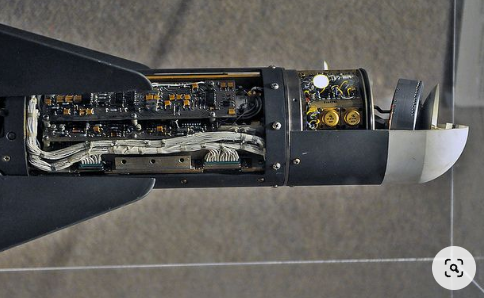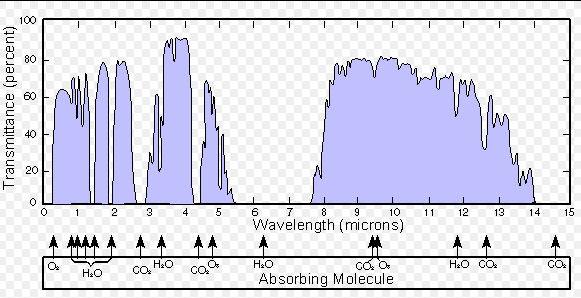-
Posts
9256 -
Joined
-
Last visited
-
Days Won
4
Content Type
Profiles
Forums
Events
Everything posted by Harlikwin
-
Lets hope the Radar ends up being a real simulation like what Razbam and HB have done, and not some cheezy FC3++ ED model.
-
Corsair has been in every coming soon vid for like 3-4 years now... Its not comin...
-
It was to disable SteamXR or whatever it was. I forget how I did it. I'm using the Varjo runtime for it.
-
Well, given the current "situation" between Raz and ED Its not looking great.
-

SA-342 Gazelle 2023 "FM" Update
Harlikwin replied to Polychop Simulations's topic in SA-342M Gazelle
Now if they only fixed the ATHOS and did a better job with the HOT. -
Why? DCS ground units and AI are pretty bad. Like the whole air to ground interaction systems of units under air attack is terrible. DCS mission maker issues aside where they park a tank/infantry platoon in the middle of an empty field aside. Once attacked those vehicles/infantry should be moving as rapidly as possible to actual cover (where they would have been IRL anyway). DCS AI gunnery for non radar guided AAA is absurd. The BMP-1 or 2 are still better than dedicated AAA platforms like the shilka, and every guy with an unstabilized 50 cal is vasiliy zaitsev. And never mind stuff like shorads vs fast jets. Literally unless a unit is notified by radio or have their own radar running, they have almost no chance to react to a fast jet attack IRL. There is literally no time to react to something coming in at 500mph. and most infantry shorads basically need like 30 secs (it varies) to actually cool the seeker and get ready to fire, assuming they actually hear/see the jet coming in the first place. But in DCS AI spotting is perternatural levels of vision and SA, all AI units immediately know where you are and immediately begin to direct insanely accurate ground fire at you. Instead of doing what would actually do IRL which is run for cover. Never mind the actual after effects of CBU-ing a set of units. They literally do-not care unless you actually fully destroy the unit, there is no morale, no shock of "holy cow" we almost just died. Just T1000 levels of determination to kill you. These problems have been major issues for years as well, so I have 0 faith that ED will do anything to actually improve this systems, or things like SAM's in DCS which are also variously broken. You'd think for a game where the critical pieces are the bombing things or getting shot at by sams that it would actually have a higher priority to make it more realistic but its just not and never really has been. Who actually cares about animations? I mean the only thing there is so ED can post some replica "kill videos" from GWOT in some trailer, which is tacky and in poor taste at best. Actually modeling realistic AI behavior should 10,000x more important. Same with "gunnery" effects. I can guarantee you private snuffy or mr tank commander's first priority is not having a showdown at the O.K. corral with enemy helo or ground attack jet, their first priority is getting under cover where they won't get murdered by enemy air, and let the attached ADA detachment deal with it. As for soviet units, yeah we desperately need older SAM systems that are the most commonly used ones in the world, but we have needed them for a decade and still nothing.
- 18 replies
-
- 13
-

-
Well, the general standard for models in 3rd parties is 2-3 variants or time frames at least. Look at razbam with different suites for the F15, Heatblur with 2 F14's (so far, maybe more "tm"), or Aerges with what 3 delivered and one more coming variants for the F1. Seems like the ED value proposition makes them seem like a bit of a piker in the contemporary sense...
-

aknowledged Addressing the Inaccuracies of the AGM-122 Sidearm
Harlikwin replied to Scorch00's topic in Weapon Bugs
Also, its very likely you cannot use the Jammer and the Sidearm at the same time, for obvious reasons. -

aknowledged Addressing the Inaccuracies of the AGM-122 Sidearm
Harlikwin replied to Scorch00's topic in Weapon Bugs
There wasn't an interchangeable seeker. I think however it had to be set for certain bands, most likely on the ground. IIRC there were 7 bands it could use or be set to (or combinations therof), but I'll have to look that up. Also, the more I think about the limitations of late 70's electronics I wouldn't be surprised in the least if it was 7 pre-programmed "threats". Most likely SHORAD and AAA radars. ZSU-23, SA-8, SA-6 etc. "The receiver subassembly shall provide the capability to scan the entire frequency band of A to G in a sawtooth" (this is where the 7 bands comes from, A-G, and its also pretty clear it doesn't mean Radar band "A" or "G" its just a generic designation. Probably refering to 7 different slices of spectrum, which likely correspond to "threat" radars. My further guess is stuff like PRF etc is either pre-programmed or has to be set on the ground if you want a different "threat library" as the harrier tac man never mentions any sort of in-cockpit programming. Its also entirely possible the library is just fixed. Also the guidance life of the missile and or seeker sensitivity needs revisiting. People are using these like HARMS and hitting stuff 10s of miles away by firing them at 30k feet etc. Here we go. Dokumints. Original Credit to Beamscanner. MY COMMENTS IN BOLD @Chizh Most of the following information was found via MIL-G-85742 AGM-122 Receiver Info: -Made 1984 -Uses a Local Oscillator/mixer to down convert the received signals to IF -Can detect PRF, PW and Amplitude --This correlates to a superheterodyne Receiver-- -Scans between frequencies "A through G"(likely a unique band code, not referencing NATO band codes as a seeker that small wouldn't be able to track such low frequencies) -We know it can detect an SA-8 and a ZSU-23 radar, thus we know it can at least see signals roughly between 7 and 15 GHz. -Generates a tone for the pilot to hear that matches the signals PRF. "WGU-15(XCL-1)/B" Seeker info: -Conically scanned. 'Gyro speed.. between 7-20Hz' -'Unambiguous FOV>15 degrees' -"The system gain in each of the four quadrants" Implies a 4 quadrant array ---Of note, the seeker must be able to detect linearly polarized signals from any angle (given the missiles chance of spin), but also must be cheap given its purpose. Knowing this, the tracking technique, the rough size of the seeker, and the time of IOC, the missile likely used a small 4 spiral antenna array ---Spiral antennas are cheap, have wide bandwidths, and can see nearly all polarizations. The band width these antennas provide would indeed allow the seeker to see the SA-8 and the ZSU-23 from such a small aperture. ---Spiral antennas have wide beam widths, making for poor tracking. Though, using the sum of 4 spiral antennas can narrow your beam width and increase your tracking performance. It does not use a 4 spiral antenna, its a parabolic dish like the 9C used but not exactly the same (picture included) null Other: -Uses PN guidance -"The AGM-122 was less capable than newer antiradiation missiles like the AGM-88 HARM, but also substantially cheaper, and its lighter weight enabled it to be carried by combat helicopters as well as fighter aircraft and fighter bombers." -"While Sidearm is less capable than modern anti-radiation missiles (like AGM-88 HARM), it is still a cost-effective alternative against low-tech threats." Likely can't deal with more modern russian radar threats i.e. SA-10/11 etc -"it was proposed to build new missiles as improved AGM-122B. The AGM-122B was to receive a new guidance and control system using re-programmable EEPROM memory boards." supports the idea of a small fixed set of radars it could detect/target --The above implies that there were some short falls with the AGM-122 guidance against modern systems. This would make sense if the missile used a conical scan tracking system like I hypothesized, as multipath effects, jammers, decoys, and amplitude modulation could cause to seeker to guide off target. Based on the following -PN guidance -no INS unit -no target plotting -the use of conical scan tracking (also called 'lobe on receive') The missile was probably very ineffective against radars with a scanning antenna. I imagine shots were only made on radars who's beams were fixated (locked) on to the launching aircraft. Reason being that the seeker would lose the radar every time the beam spun around to the other direction, in which case it might home in on a reflection off an illuminated object (think of a flashlight spinning around). Broadly agree, its entirely possible it would only target actual tracking radars, though possibly it could use sidelobes. References: http://guidedmissilecomponents.emilspec.com/MIL-G-85742-2/page2.html http://guidedmissilecomponents.emilspec.com/MIL-G-85742-3/index.html http://guidedmissilecomponents.emilspec.com/MIL-G-85742-4/index.html http://guidedmissilecomponents.emilspec.com/MIL-G-85742-5/index.html http://guidedmissilecomponents.emilspec.com/MIL-G-85742/index.html http://www.designation-systems.net/dusrm/m-122.html https://www.onwar.com/weapons/rocket/missiles/USA_AGM122.html -

SA-342 Gazelle 2023 "FM" Update
Harlikwin replied to Polychop Simulations's topic in SA-342M Gazelle
Hopefully the fix the friggin Optical sight stabilization, or actually model it in the first place, to call that "arcade" level is being nice. -
I'm talking about the GCI "human" bit. Pointing you at a target is trivial. Setting up an ambush using several planes is a whole other ball of wax. And while Razbam does "good stuff" (tm), they are still likely gonna be limited by DCS itself in this case. Though I wonder if a "jester" like GCI where you ask it to setup different kinds of intercepts on different targets might work well. Or adding some sort of F10 map GCI functionality for humans.
-
Yeah, I know how it worked IRL. I have my doubts it will work anything like that in DCS.
-
Thats the GCI system that was trialed on the M2k but never adopted. Its in the game. Hopefully better than TAF... Lazur controllers could direct and coordinate flights quite well. Meanwhile all TAF in the game does is give you steering commands to the nearest enemy.
-
Yeah, 2.3-2.9 is very much not in the traditional MWIR region (3-5 microns) associated with all aspect missiles. So undoubtedly a cooled PbS seeker head. And at least if I understand the 120 degree reference as being 120 degrees forward of the rear of the jet then there is little chance of the seeker seeing the tail from most aspects in any reliable fashion. Whatever data exists for the 9H seeker should be generally reliable for cooled PbS seeker heads and generic acquisition angles, though of course that's all actually geometry and image dependent on the specific aircraft and its nozzle configuration. The one IR101 comment about the paper listed above is that while MWIR seekers can see IR plumes centered around 4 microns (plume is predominantly hot CO2), plume is RAPIDLY absorbed in atmosphere (as you can see the transmittance is near 0 in that region). And this seeker if it can see from 2.3-2.9 microns it can't see anything at 4 microns. The major advantage of MWIR seekers (PbSe and InSb was to be able to see things like plume and cooler airframe components from all aspects) But even there plume is basically undetectable past about 10km due to atmospheric absorption. null
- 1 reply
-
- 2
-

-

-

reported AIM-9B on F-5 should not be able to uncage
Harlikwin replied to ustio's topic in Bugs and Problems
The uncage thing for 9B's on the F86 needs to get fixed too. IIRC I made the same bug report there ages ago as well. -

Expectation on Air to Air missiles of the MiG-29A?
Harlikwin replied to pepin1234's topic in DCS: MiG-29A Fulcrum
Yeah now do sales numbers... who bought how many. -

MiG-23 MLA what is it's planned weapons capabilities?
Harlikwin replied to Hodo's topic in MiG-23 MLA Flogger
It will have R60's at a minimum. -

Expectation on Air to Air missiles of the MiG-29A?
Harlikwin replied to pepin1234's topic in DCS: MiG-29A Fulcrum
SEAD in DCS without some sort of external IADS script is kina a joke gameplay wise at this point. And thats just basic stuff like turning off a radar or relocating a battery. Much less stuff like decoys/false signals etc. I think I recall HB saying that actual seeker heads will be modeled i.e. targeting different bands and with various other things, i.e. some had smoke some didn't, some had G-bias some didnt. And so forth. Frankly the Shrike was a pretty crappy ARM tho. Anyhow this has nothing to do with the 29. -
Yup, all of that is IR 101. Less range at low alt due to more atmosphere. More range looking up against cold sky. Most of the detection charts specify the conditions I forget all the ones for KOLS but they are listed usually a few thousand meters and with whatever target usually a mig21 or Tu-16. Usually they also specify the background and the loss of range due to it being vs cloud background or earth. What the manuals don't talk about much is IR clutter and reflection which are major issues when looking at ground (especially urban), or nicely lit cloud edges. But various mig-29 pilots have chimed in on the clutter issues when using the IRST.
-
The fun part no one seems to get about "afterburning" is that you don't see AB plumes past a few miles in IR because of rapid CO2 absorption in IR ( i mean this is IR 101). And early missile seekers can't see it at all. At best you get some increase in the radiated energy from the "hot metal" bits. In general the current ED IR model seems to be based on a poor understanding of how IR actually works.
-
You got 2 saudi airbases for DS1... you got enough iran for iran/iraq. Hell you even got Khark island (focal point of the iran/iraq air war). So yeah if the map looked like this I'd be happy, however I have serious doubts it will.
-
Will it include a decent bit of the iranian border area for 80's scenarios? Yeah this would be ideal, but I think its way over optimistic.
-
In general the "IRST" mode of the KOLS was regarded as pretty useless by pilots. Being a linear PbSe sensor more or less backs that up since it will have issues with long range detection, and the lack of clutter processing will make it work "poorly". It was good at cueing weapons at short range with the helmet mounted sight though. The FC3 "IRST" modeling is in general really poor.
-

Expectation on Air to Air missiles of the MiG-29A?
Harlikwin replied to pepin1234's topic in DCS: MiG-29A Fulcrum
Passive anti-radiation modeling is a fairly complex thing, and honestly IDK how well its done in DCS. -

Expectation on Air to Air missiles of the MiG-29A?
Harlikwin replied to pepin1234's topic in DCS: MiG-29A Fulcrum
Brother, the amount misinformation on IR stuff in general in DCS and especially in DCS is huge. The numbers for the KOLS that Aria posted are accurate. It was never meant to be some long range IRST system. Those ranges drop further if the target background is clouds or the ground by about half. We have RL 29 pilots testifying to the fact it was basically useless outside of BFM ranges (Where it did do well, because thats what it was designed to do). Big engine doesn't matter. Aspect angle, and total solid angle are what actually matters, and to a lesser extent if the target is supersonic or not. For "long rage detection" afterburner can't even be seen as the CO2 lines are rapidly absorbed (it does matter at short ranges because it takes a few km of atmosphere to absorb it all). And how this simple, literal IR 101 fact is lost on pretty much every dev amazes me. But maybe it shouldn't. Also how "hot" you think something is also wrong, because turns out different sensor see different energies in the spectrum based on the detector chemistry. Thats the first mistake most people make about IR. Its entirely like the "flood" mode on western jets. It is what it is.



